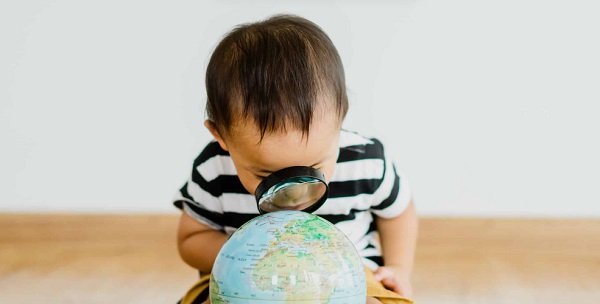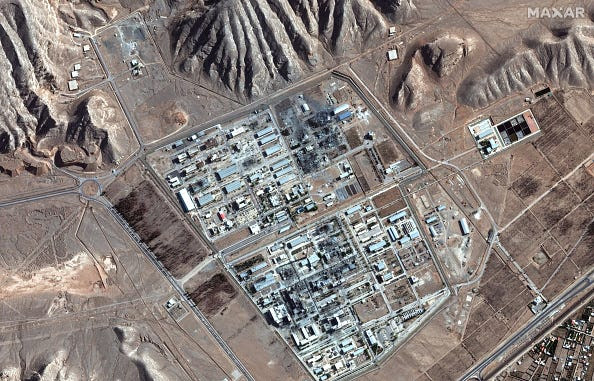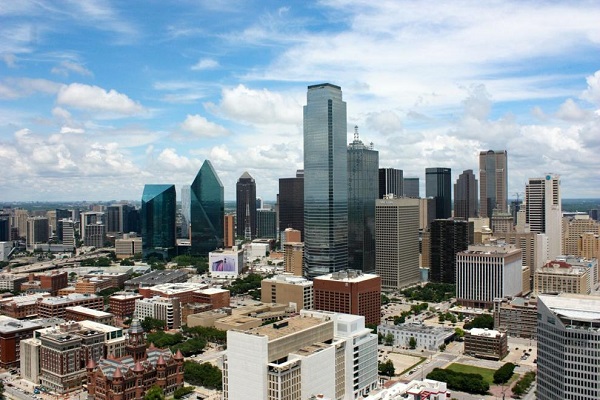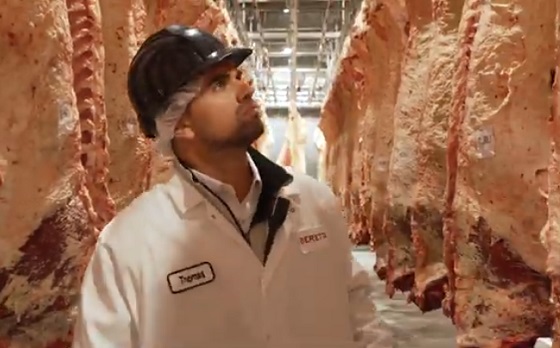Uncategorized
Scientists reveal first image ever made of a black hole

WASHINGTON — Scientists on Wednesday revealed the first image ever made of a black hole, depicting its hot, shadowy edges where light bends around itself in a cosmic funhouse effect.
Assembling data gathered by eight radio telescopes around the world, astronomers created the picture showing the violent neighbourhood around a supermassive black hole, the light-sucking monsters of the universe theorized by Einstein more than a century ago and confirmed by observations for decades.
It looked like a flaming orange, yellow and black ring.
“We have seen what we thought was unseeable. We have seen and taken a picture of a black hole. Here it is,” said Sheperd Doeleman of Harvard.
Jessica Dempsey, a co-discoverer and deputy director of the East Asian Observatory in Hawaii, said it reminded her of the powerful flaming Eye of Sauron from the “Lord of the Rings” trilogy.
Unlike smaller black holes that come from collapsed stars, supermassive black holes are mysterious in origin. Situated at the centre of most galaxies, including ours, they are so dense that nothing, not even light, can escape their gravitational pull. This one’s “event horizon” — the point of no return around it, where light and matter begin to fall inexorably into the abyss — is as big as our entire solar system.
Three years ago, scientists using an extraordinarily sensitive observing system heard the sound of two much smaller black holes merging to create a gravitational wave, as Albert Einstein predicted. The new image, published in the Astrophysical Journal Letters and announced around the world in several news conferences, adds light to that sound.
Outside scientists suggested the achievement could be worthy of a Nobel Prize, just like the gravitational wave discovery.
While much around a black hole falls into a death spiral and is never to be seen again, the new image captures “lucky gas and dust” circling at just far enough to be safe and seen millions of years later on Earth, Dempsey said.
Taken over four days when astronomers had “to have the perfect weather all across the world and literally all the stars had to align,” the image helps confirm Einstein’s general relativity theory, Dempsey said. Einstein a century ago even predicted the symmetrical shape that scientists just found, she said.
“It’s circular, but on one side the light is brighter,” Dempsey said. That’s because that light is approaching Earth.
The measurements are taken at a wavelength the human eye cannot see, so the astronomers added colour to the image. They chose “exquisite gold because this light is so hot,” Dempsey said. “Making it these warm gold and oranges makes sense.”
What the image shows is gas heated to millions of degrees by the friction of ever-stronger gravity, scientists said. And that gravity creates a funhouse effect where you see light from both behind the black hole and behind you as the light curves and circles around the black hole itself, said astronomer Avi Loeb, director of the Black Hole Initiative at Harvard. (The lead scientists in the discovery are from Harvard, but Loeb was not involved.)
The project cost $50 million to $60 million, with $26 million of that coming from the National Science Foundation.
Johns Hopkins astrophysicist Ethan Vishniac, who was not part of the discovery team but edits the journal where the research was published, pronounced the image “an amazing technical achievement” that “gives us a glimpse of gravity in its most extreme manifestation.”
He added: “Pictures from computer simulations can be very pretty, but there’s literally nothing like a picture of the real universe, however fuzzy and monochromatic.”
“It’s just seriously cool,” said John Kormendy, a University of Texas astronomer who wasn’t part of the discovery team. “To see the stuff going down the tubes, so to speak, to see it firsthand. The mystique of black holes in the community is very substantial. That mystique is going to be made more real.”
There is a myth that says a black hole would rip you apart, but Loeb and Kormendy said the one pictured is so big, someone could fall into it and not be torn to pieces. But the person would never be seen from again.
Black holes are “like the walls of a prison. Once you cross it, you will never be able to get out and you will never be able to communicate,” Loeb said.
The first image is of a black hole in a galaxy called M87 that is about 53 million light years from Earth. One light year is 5.9 trillion miles, or 9.5 trillion kilometres. This black hole is about 6 billion times the mass of our sun.
The telescope data was gathered by the Event Horizon Telescope two years ago, but it took so long to complete the image because it was a massive undertaking, involving about 200 scientists, supercomputers and hundreds of terabytes of data delivered worldwide by plane.
The team looked at two supermassive black holes, the M87 and the one at the centre of our own Milky Way galaxy. The one in our galaxy is closer but much smaller, so they both look the same size in the sky. But the more distant one was easier to take pictures of because it rotates more slowly.
“We’ve been hunting this for a long time,” Dempsey said. “We’ve been getting closer and closer with better technology.”
___
The Associated Press Health and Science Department receives support from the Howard Hughes Medical Institute’s Department of Science Education. The AP is solely responsible for all content.
Seth Borenstein, The Associated Press
Uncategorized
Kananaskis G7 meeting the right setting for U.S. and Canada to reassert energy ties
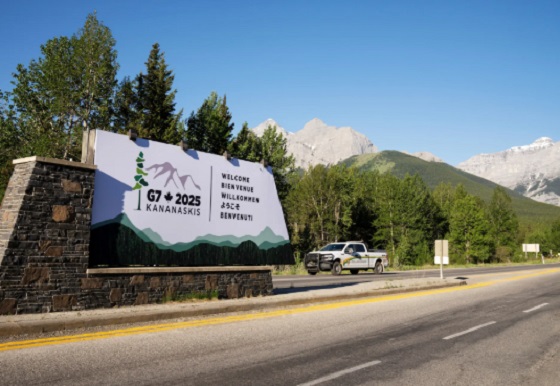

Energy security, resilience and affordability have long been protected by a continentally integrated energy sector.
The G7 summit in Kananaskis, Alberta, offers a key platform to reassert how North American energy cooperation has made the U.S. and Canada stronger, according to a joint statement from The Heritage Foundation, the foremost American conservative think tank, and MEI, a pan-Canadian research and educational policy organization.
“Energy cooperation between Canada, Mexico and the United States is vital for the Western World’s energy security,” says Diana Furchtgott-Roth, director of the Center for Energy, Climate and Environment and the Herbert and Joyce Morgan Fellow at the Heritage Foundation, and one of America’s most prominent energy experts. “Both President Trump and Prime Minister Carney share energy as a key priority for their respective administrations.
She added, “The G7 should embrace energy abundance by cooperating and committing to a rapid expansion of energy infrastructure. Members should commit to streamlined permitting, including a one-stop shop permitting and environmental review process, to unleash the capital investment necessary to make energy abundance a reality.”
North America’s energy industry is continentally integrated, benefitting from a blend of U.S. light crude oil and Mexican and Canadian heavy crude oil that keeps the continent’s refineries running smoothly.
Each day, Canada exports 2.8 million barrels of oil to the United States.
These get refined into gasoline, diesel and other higher value-added products that furnish the U.S. market with reliable and affordable energy, as well as exported to other countries, including some 780,000 barrels per day of finished products that get exported to Canada and 1.08 million barrels per day to Mexico.
A similar situation occurs with natural gas, where Canada ships 8.7 billion cubic feet of natural gas per day to the United States through a continental network of pipelines.
This gets consumed by U.S. households, as well as transformed into liquefied natural gas products, of which the United States exports 11.5 billion cubic feet per day, mostly from ports in Louisiana, Texas and Maryland.
“The abundance and complementarity of Canada and the United States’ energy resources have made both nations more prosperous and more secure in their supply,” says Daniel Dufort, president and CEO of the MEI. “Both countries stand to reduce dependence on Chinese and Russian energy by expanding their pipeline networks – the United States to the East and Canada to the West – to supply their European and Asian allies in an increasingly turbulent world.”
Under this scenario, Europe would buy more high-value light oil from the U.S., whose domestic needs would be back-stopped by lower-priced heavy oil imports from Canada, whereas Asia would consume more LNG from Canada, diminishing China and Russia’s economic and strategic leverage over it.
* * *
The MEI is an independent public policy think tank with offices in Montreal, Ottawa, and Calgary. Through its publications, media appearances, and advisory services to policymakers, the MEI stimulates public policy debate and reforms based on sound economics and entrepreneurship.
As the nation’s largest, most broadly supported conservative research and educational institution, The Heritage Foundation has been leading the American conservative movement since our founding in 1973. The Heritage Foundation reaches more than 10 million members, advocates, and concerned Americans every day with information on critical issues facing America.
Uncategorized
Poilievre on 2025 Election Interference – Carney sill hasn’t fired Liberal MP in Chinese election interference scandal

From Conservative Party Communications
“Yes. He must be disqualified. I find it incredible that Mark Carney would allow someone to run for his party that called for a Canadian citizen to be handed over to a foreign government on a bounty, a foreign government that would almost certainly execute that Canadian citizen.
“Think about that for a second. We have a Liberal MP saying that a Canadian citizen should be handed over to a foreign dictatorship to get a bounty so that that citizen could be murdered. And Mark Carney says he should stay on as a candidate. What does that say about whether Mark Carney would protect Canadians?
“Mark Carney is deeply conflicted. Just in November, he went to Beijing and secured a quarter-billion-dollar loan for his company from a state-owned Chinese bank. He’s deeply compromised, and he will never stand up for Canada against any foreign regime. It is another reason why Mr. Carney must show us all his assets, all the money he owes, all the money that his companies owe to foreign hostile regimes. And this story might not be entirely the story of the bounty, and a Liberal MP calling for a Canadian to be handed over for execution to a foreign government might not be something that the everyday Canadian can relate to because it’s so outrageous. But I ask you this, if Mark Carney would allow his Liberal MP to make a comment like this, when would he ever protect Canada or Canadians against foreign hostility?
“He has never put Canada first, and that’s why we cannot have a fourth Liberal term. After the Lost Liberal Decade, our country is a playground for foreign interference. Our economy is weaker than ever before. Our people more divided. We need a change to put Canada first with a new government that will stand up for the security and economy of our citizens and take back control of our destiny. Let’s bring it home.”
-

 Business2 days ago
Business2 days agoWEF-linked Linda Yaccarino to step down as CEO of X
-

 Business2 days ago
Business2 days ago‘Experts’ Warned Free Markets Would Ruin Argentina — Looks Like They Were Dead Wrong
-

 Automotive2 days ago
Automotive2 days agoAmerica’s EV Industry Must Now Compete On A Level Playing Field
-

 International2 days ago
International2 days agoSecret Service suspends six agents nearly a year after Trump assassination attempt
-

 Bruce Dowbiggin1 day ago
Bruce Dowbiggin1 day agoThe Covid 19 Disaster: When Do We Get The Apologies?
-

 Alberta1 day ago
Alberta1 day agoFourteen regional advisory councils will shape health care planning and delivery in Alberta
-

 Alberta1 day ago
Alberta1 day agoAlberta school boards required to meet new standards for school library materials with regard to sexual content
-

 Business1 day ago
Business1 day agoCarney government should recognize that private sector drives Canada’s economy
